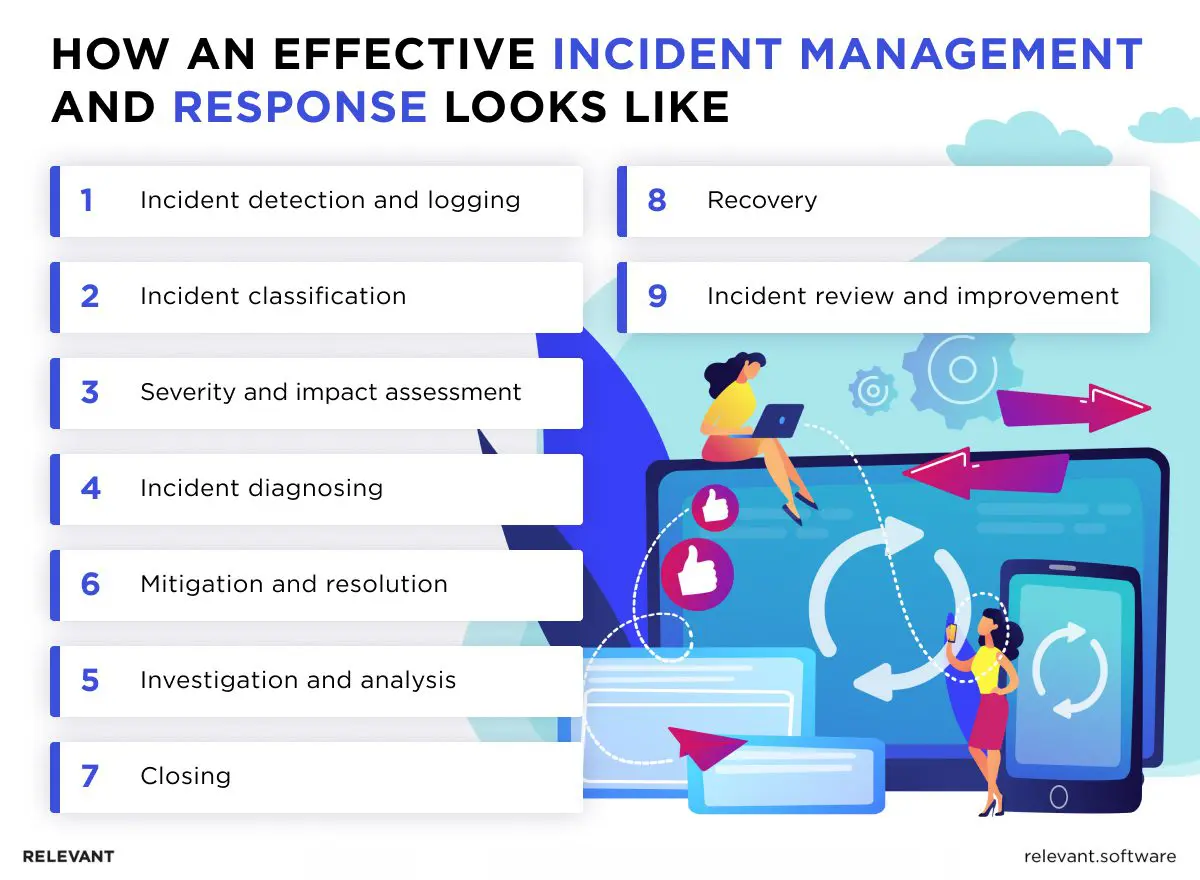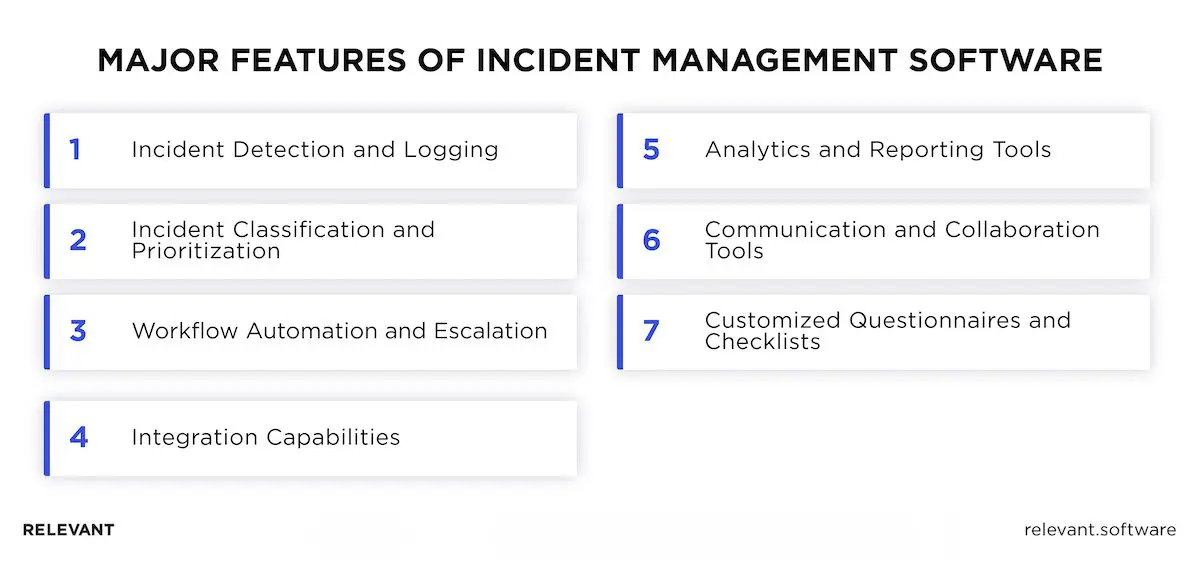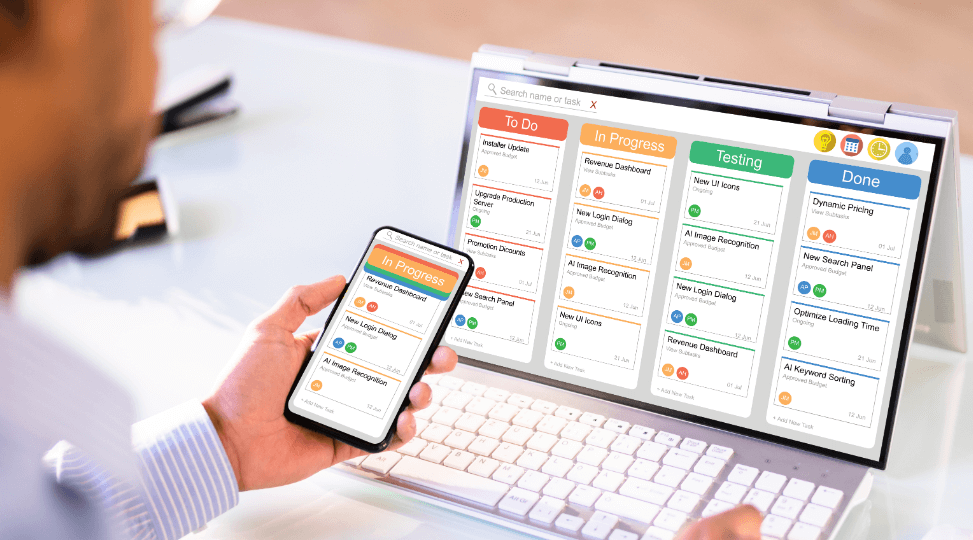The Value of Incident Management Software: How to Build IT Resilience

Let’s face it: IT incidents happen, and they happen far more often than any site reliability engineer (SRE) or DevOps team would prefer. Another truth is that incident response often consumes an alarming amount of time for your IT staff and can look like a chaotic scramble. Everyone is under pressure, communications break down, and instead of a coordinated effort, it often turns into a cycle of reactive measures and patchwork fixes. But what if we tell you that there is a way to change this chaos into a well-structured process thanks to incident management software?
Yes, the right software will help you better respond to any type of incident and orchestrate a smooth resolution. But what does it do, and do you actually need one? Find it out in this guide and learn about the benefits and critical features of incident response management software. And in case you plan to build a custom solution, we cover that, too, and provide detailed steps to accomplish that. So, here we go.
What is Incident Management Software?
Incident management software is a tool that helps developers and IT operations teams respond to incidents (e.g., system disruptions) and recover normal service functionality as quickly as possible. It’s a central command center where your IT teams can monitor incidents, engage with stakeholders, and work together on solutions. Also, incident management software systems can automate certain tasks like alert notifications or issue escalations, which helps teams prioritize issues and stay focused on the most critical tasks at hand.
The need for an incident management tool depends greatly on the size and complexity of your IT setup and the intricacies of your business operations. For smaller, simpler systems, you might get by without specialized software. But as your IT environment and business processes become more complex, the value of such a tool becomes undeniable.

Types of Incident Management Software
With the booming incident management software market expected to grow at a CAGR of 16.9% to reach a value of $2.4 billion by 2027, it teems with a variety of options. So, the good news is every organization can find relevant solutions. Naturally, different companies lean toward different incident management methodologies and consequently use different types of tools. Here are the options available:
Cloud-based vs. On-premise solutions
Cloud solutions are quick to deploy, scalable, and accessible anywhere with an Internet connection. On the other hand, on-premise software is powerful and secure and offers deep customization, but with significant upfront costs and limited remote access. Here is a table with key differences for you to see the full picture:
| Feature | Cloud-based software | On-premise software |
| Deployment | Fast and easy, minimal setup | Requires IT expertise and hardware installation |
| Scalability | Scales effortlessly as needed | Requires additional hardware or software purchases to scale |
| Cost | Typically lower upfront costs, subscription-based pricing | High upfront cost for software licenses and hardware |
| Accessibility | Accessible from any device with an Internet connection | Limited access to devices within the network |
| Security | Relies on vendor’s security measures | Offers a potentially higher level of security with data residing on-site |
| Updates | Automatic updates | Manual updates and maintenance |
| Customization | Limited | Deep customization to fit specific workflows |
| Ideal for | Agile companies, remote teams, budget-conscious organizations | Companies with strict security requirements, highly customized needs, or concerns about internet dependence |
Standalone vs. Integrated systems
Incident management software solutions come in two flavors: standalone and integrated. Let’s see the peculiarities of these options in more detail:
| Feature | Standalone | Integrated |
| Functionality | Focused on core incident response tasks (ticketing, report generation) | Comprehensive features like incident response, collaboration, automation, analytics |
| Integration | Limited | Integrates seamlessly with IT systems (ITSM platform) |
| Deployment | Generally easier and faster to set up | May require more complex integration and configuration |
| Learning Curve | Typically easier to learn and use | May have a steeper learning curve due to additional features |
| Cost | Potentially lower upfront costs | May have a higher cost due to additional features and potential customization |
| Scalability | May be less scalable for complex environments | More scalable with existing IT infrastructure |
| Ideal for | Small teams with simple needs, budget-conscious organizations | Larger organizations with complex workflows and IT ecosystem |
Benefits of Incident Management Software
Incidents strike without notice, but with the right security incident management software, your business doesn’t have to be caught off guard. Here are some reasons to use software solutions:

- Streamlined Incident Reporting Processes
Incident reporting doesn’t have to be a headache. With software that automates data entry and report generation among other tasks, what used to take hours now takes minutes. Teams can log incidents faster and dedicate all their time to issue resolution. What’s more, clear structures of reports helps you catch all the details, which accelerates diagnosis and fixes.
- Faster Incident Response and Resolution
When we talk about IT incidents, the faster you take control over the situation, the better. Incident management system software offers tools that help your team speed up response times. Automated system alerts will immediately notify your personnel upon incident detection, so no precious time will be lost. Incident classification by severity, type, or impact lets your business prioritize responses for quicker actions. One more feature your IT operations team will find valuable is event correlation, which can identify root causes faster than a manual approach.
- Better Communication and Collaboration
Without clear communication, a server outage at peak sales can quickly turn into a customer service nightmare. Frustrated customers bombard the sales team with questions while your IT department scrambles to diagnose the problem. Tools like shared dashboards and chat apps featured in enterprise incident management software lets your team members view the situation from different angles, safely exchange information, and work together toward a solution. In a crisis, a tight-knit team that communicates effectively is the difference between a PR disaster and a smooth recovery.
- Compliance and Security
Financial entities face different security and privacy requirements than hospitals, for example. While regulations vary significantly across sectors and regions, the point is any business must follow those specific requirements unless they’re ready to pay extra money for non-compliance. Software incident management solutions simplify compliance with GDPR and more industry-specific laws like HIPAA in several ways. First, they automate the documentation and reporting processes and record all the incident-related data, which is easily accessible for audits. Second, you can configure security incident tracking software to update compliance protocols when regulations change automatically. Finally, clear oversight and centralized data offered by software help companies better identify and address compliance gaps.
- Performance Analysis
An incident’s story doesn’t end with its resolution. The technical team needs to figure out what went wrong and what was the reason to get to the bottom of the occurrence. For this task, your engineers can rely on incident tracking software. It simplifies post-incident analysis and produces in-depth reports that specify the “who, what, when, and why” behind the issue. A scrupulous incident investigation will let your company improve weak points and take measures to avoid similar issues in the future.
Key Features to Look for in Incident Management Software
Now that you know how critical incident management software can supercharge your IT response, it will also be helpful to learn about the critical functionality that can make or break your response time and effectiveness in a crisis. That said, here is the list of some features we believe are core to any solution and which you should seek in the safety incident management software for your organization.

Incident Detection and Logging
First on your priority list should be automated incident detection functionality. The software should be able to recognize big and small incidents reliably and quickly, from a broken link and slow-loading website to system outages. Also, good emergency incident management software makes and keeps records of every incident and creates detailed logs that engineers can use for post-incident reviews and compliance audits.
Incident Classification and Prioritization
Incident classification is the emergency room triage of your IT operations that quickly sorts out issues by severity to ensure that the most critical problems are addressed first. So, look for features that allow for automatic or user-defined incident classification based on severity, impact, or type. With clear categorization, your team can quickly understand the urgency and assign the issue to the right specialists. Problem prioritization helps companies maintain system stability, devote immediate attention to critical events, and fix minor glitches before they become major disruptions.
Workflow Automation and Escalation
We’ll say nothing new – automation of tasks saves time and improves the team’s productivity. As it is, incident management software automates several processes like incident identification, categorization, and prioritization. It uses skills-based routing to ensure that each ticket is immediately sent to the right specialist. Customer support can also be partly taken out of your agents. One tip here from our experts: choose a tool that offers customizable automation rules so your organization can tailor them to fit its workflow needs.
Integration Capabilities
Accurate incident detection relies heavily on data. If the incident management system software can’t access and process all the metrics and information from the apps and services you use, how can it catch issues and deviations from normal operations? That’s why the software should integrate flawlessly with monitoring and notification tools your team already relies on. Similarly, it’s important the solution works properly with your other operational tools. The goal is for the software to fit naturally into your current tech environment so personnel isn’t burdened with learning to use an entirely new system.
Analytics and Reporting Tools
Gaining insights from an incident is as crucial as resolving it. With post-incident analytics, your technical team can assess the effectiveness of their response and identify any gaps in protocols or procedures. Worthy EHS incident reporting software creates logs and generates thorough reports that involve technical descriptions and down to the customer impact. When you have all the details of the situation at hand, it’s much easier to determine the origin of the incident and related factors, which helps prescribe targeted solutions to better fortify your IT infrastructure.
Communication and Collaboration Tools
Incident management software systems that integrate smoothly with your team’s communication platforms, like Slack, Teams, or Jira, can make all the difference. Such integrations ensure that the right team members are alerted immediately based on the type and severity of the incident, right within the tools they use every day. Effective collaboration becomes second nature as updates and critical information flow freely among team members, which keeps the resolution process on track and efficient.

Customized Questionnaires and Checklists
One size rarely fits all when it comes to effective incident management. That’s why we would advise you to seek solutions that allow you to customize the workflows to perfectly meet your company’s needs. We talk about the capabilities to build tailored questionnaires and checklists specific to different incident types. Due to this feature, your team can gather the most relevant information quickly and efficiently and save valuable time during the critical first moments of response.
Top Incident Management Tools
Clearly, a universal tool that fits every business perfectly doesn’t exist. Some tools are general and give a broad overview of various tasks to appeal to a wider audience, while others are very specific and provide top-notch functionality for certain industries or areas. Here is a comparison chart of some of the most popular incident response management software to give you an idea of the options available on the market.
| Tool | Features | Pros | Cons | Price | Ideal for |
| ServiceNow | – Automation & workflows – Extensive integrations – Self-service portal – Advanced reporting & analytics | – Powerful & scalable – Highly customizable – Strong security options | – Complex interface – High cost (enterprise-focused) | Custom quote | Large enterprises with complex IT environments |
| PagerDuty | – Alert routing & escalation – Real-time collaboration tools – On-call scheduling – Incident metrics & reports | – User-friendly & easy to set up – Excellent integrations – Mobile version | – Limited analytics (compared to ITSM platforms) | Freemium (limited features) – paid plans start at ~$25/user/month | Mid-sized businesses & teams that prioritize communication |
| Atlassian Jira Service Management | – Project-style incident management -Customizable workflows – Integrates with other Atlassian tools – Kanban boards for incident visualization | – Familiar interface for Jira users – Wide customization options – Agile & flexible approach | – Limited out-of-the-box report generation – May require additional configuration | Freemium (limited features) – paid plans start at ~$22.05 per agent (estimated) $66.15 monthly total | Teams that already use Jira Project-oriented incident management approach |
| Splunk On-Call (formerly VictorOps) | – Intelligent alert routing – On-call Schedules & Escalation – Incident collaboration tools – Integrates with monitoring & notification systems | – Powerful alert correlation – Actionable insights & robust report generation – Strong security features | Limited asset management features (compared to ITSM platforms) | Per-seat or per-alert price (varies) | Teams focused on alert management & incident routing |
| Freshservice | – Ticketing & incident management – Asset management & configuration management (CMDB) – Self-service portal & knowledge base – Mobile app for on-the-go access | – Affordable & easy to use – Strong integrations – Comprehensive feature set | Analytics may not be as extensive as dedicated ITSM Platforms | Subscription-based with starter plan at £15 per agent per month | Small & mid-sized businesses – Teams that need an all-in-one solution |
While off-the-shelf solutions abound, some companies choose to build custom enterprise incident management software for a few reasons. They might have highly specialized needs or complex workflows that available tools can’t fully accommodate. But probably the major deciding factors that speak in favor of custom solution development are better control over data security and customization, especially for businesses in heavily regulated industries. If you’re one of those businesses that demand custom software development solutions, our experts outlined the key aspects and steps to create the software.
How to Develop Incident Management Software
We’ll put aside the details of the initial phase of software development, which involves requirement analysis and planning, just say a few words. At this stage, developers and project managers gather input from future users and stakeholders to understand the specific needs and challenges of a software incident management solution. The team then outlines the project scope and objectives to ensure the software will solve problems, not create new ones.
And the most fun part of the development starts now.
Architecture Design of Incident Management Software
When you have a clear comprehension of project needs in hand, it’s time to translate those requirements into a technical blueprint. Here, we’ll discuss how to structure the software’s core components to ensure scalability, efficiency, and seamless functionality.
Technology Stack Selection
With a project roadmap ready, you should proceed with the selection of building materials for your security incident management software – technologies. You need to evaluate and choose programming languages, frameworks, databases, APIs, and the rest of them that will best fit the software’s needs for speed, security, and maintainability. Consider factors like team expertise, desired features, and long-term growth potential to choose the perfect tech stack for your solution.
Scalability and Reliability
As you build your incident management tool, remember: today’s smooth sailing shouldn’t turn into tomorrow’s choppy waters. Scalability and reliability are crucial considerations in the architecture design phase. This means you should choose technologies that can grow alongside your user base and withstand increased incident volume. Think modular design, fault tolerance, and robust data management to ensure your software remains the dependable captain your team needs, even in the time of IT storms.
Security Measures
Security can’t be an afterthought in software intended to cope with incidents like data breaches or cyber-attacks. That’s why Relevant experts advocate robust security protocols from the ground up and suggest everyone follow this practice. Among the security features you must certainly implement for your healthcare incident reporting software are user authentication, data encryption, and access controls. To secure your solution even better, integrate threat intelligence feeds that will automatically adjust security measures in accordance with the latest global cybersecurity threats.
Development Process for Incident Management Software
The blueprint is laid, the materials are chosen, and what is left is the actual development of the solution. If you have properly gathered the requirements and designed the architecture, you won’t have difficulties with the process of development. But here are some important aspects our experts want you to pay attention to when you begin development.
A brief remark: if you choose product development services with a technology partner like Relevant, all the strategies, best practices, and processes described below are already established and readily available.
Agile Development Methodology
The technologies progress at a breakneck speed and reshape the IT field faster than you can say “innovation.” That said, it’s only natural that an agile approach to software development gained popularity. Unlike traditional waterfall methodologies, agile operates in short, iterative sprints where each sprint is dedicated to a specific set of features (alert system, user management, and so on).

The beauty of this method is you don’t wait to finish the whole application to get the user feedback. Instead, you can receive the user’s input (your IT team) on a certain feature, refine it, and move on to the next. This speeds up the development process and, most importantly, improves the quality of the final product.
“Don’t wait for the end of a sprint to gather user feedback. Instead, actively solicit feedback throughout the development process. This could be quick surveys after user testing sessions or informal chats with team members. Remember, effective communication and a culture of feedback are the cornerstones of a successful agile project.”
Vadim Struk, Product Manager at Relevant Software
User Experience Design
In the heat of an IT incident, the last thing your team needs is an intricate software interface. That’s why user experience (UX) design is a must-have for critical incident management software. It prioritizes user needs, which means clean layouts, intuitive navigation, and simple workflows. Every element, from visual design to information hierarchy, should be created to minimize cognitive load and maximize efficiency.
The best practices would be one-click actions for critical tasks, clear status indicators, and readily accessible resources. The easier your software to use for your team, the quicker and more decisively they can act in case of incidents to minimize downtime and ensure a smooth recovery. If you feel like the design part is your weak point and you need some external expertise to improve it, opting for UI/UX design services would be a wise solution.
Testing and Quality Assurance
An incident management tool is only as good as its reliability under pressure. Imagine a scenario where your software crashes just during a critical incident – disastrous, right? The situation you wouldn’t wish even to your enemy. To avoid even the smallest chances of such scenarios, thorough and comprehensive testing and QA service should be central to the development lifecycle. Here are several key strategies to incorporate:
- Unit testing: Isolate and test individual components or units of the software to verify that each part functions correctly on its own.
- Tests on integration: Combine components and test them together to ensure they interact correctly and processes flow as expected.
- Tests on performance: Evaluate the software’s response times and stability under different levels of load to ensure it can steadily handle real-world use.
- Tests on stress: Test the software under extreme operational conditions to identify its weak points and how it recovers from failure.
- Tests on security: Conduct vulnerability scans and penetration tests to uncover potential security weaknesses that attackers could exploit.
Deployment and Implementation Strategies
You’re almost ready to see your incident management software in action, but there are two crucial steps left: implementation and deployment. As with any development stage, success here will depend on good preparation and careful execution. So, how can you properly plan and prepare for the software deployment so that it goes perfectly without a hitch?
Deployment Preparation
The launch of your incident management software solutions requires finesse and some arrangements, so it’s important to keep a keen eye on detail. Here are some actions you should take to prepare for a smooth transition:
- Make a plan. Map out each step of the deployment and outline the responsibilities of each team member.
- Pick the right time. Schedule deployment for low-traffic periods to cause the least disruption.
- Mirror your reality. Set up a testing environment that replicates your live system for thorough software checks.
- Train your team. Equip users with guides and training to help them navigate the new software faster and more effectively.
- Plan for the unexpected. Develop a rollback strategy in case issues arise so you can swiftly return to the previous system.
- Monitor like a hawk. Keep a watchful eye on system performance post-deployment to catch and address any problems quickly.
Training and Support
Even the most sophisticated and feature-rich system is useless if end-users don’t understand how to navigate its functionalities and leverage its capabilities. Any new system or tool requires some adjustment period and instructions for users to get acquainted with and learn how to make the most out of it. In this regard, investment in user enablement should be considered part of the overall software lifecycle. Education programs and support resources will let your team comfortably inhabit the new system and reap all its benefits.
Continuous Improvement and Updates
Just like a car needs regular maintenance and upgrades to function optimally on the road, your security incident management software requires continuous improvement and updates from time to time. Left unattended, it will become obsolete and unreliable after a while since technology advances and sets new standards for software performance and security. Here’s how to keep your solution relevant and in top shape:
- Gather user feedback. Actively solicit user input through surveys or feedback forms to identify areas for improvement.
- Analyze incident trends. Regularly review incident data to identify repeated issues and inform future software updates.
- Stay updated on security threats. Incorporate the latest security patches and vulnerability fixes to maintain a robust system.
- Prioritize feature enhancements. Based on user feedback and identified needs, prioritize and develop new features to elevate the software’s capabilities.
AI and Machine Learning Integration
If you’ve been keeping even a casual eye on the news, it’s hard to miss the buzz about the breakneck pace of AI technology developments. Its popularity has skyrocketed in business circles due to its potential to enhance virtually any process. With some experience in AI software development, we offer you to review how this technology can supercharge your incident management solution:
- Smarter detection. AI can analyze system logs and identify anomalies that might signal potential incidents before they erupt.
- Automated response. You can train AI models to handle routine tasks like initial troubleshooting or data collection to free human experts for complex issues.
- Predictive maintenance. AI-powered systems use historical data to predict future issues and address them at early stages, which prevents downtime and reduces disruption.
- Continuous education. AI constantly learns and improves. As your system encounters new incidents, it improves its detection and response capabilities over time.
Build an Incident Response Software with Relevant
IT incidents are inevitable, but the chaos they cause doesn’t have to be. Although tools alone can’t offer a resilient incident management strategy, they can augment your team’s capabilities and help you stay on top of issues.
The market is flooded with enterprise incident management software options, yet few, if any, can match all your specific needs. Partnership with Relevant Software, a custom software development company, might be the best choice in terms of flexibility, cost-efficiency, and expertise compared to in-house development. We have dedicated experts in fintech software and other industries who can create a solution that fits exactly your workflow, security, and compliance needs. Within just 1-2 weeks, we can assemble a team that will be ready to start your project.
Take control of your IT incident management with Relevant experts.



